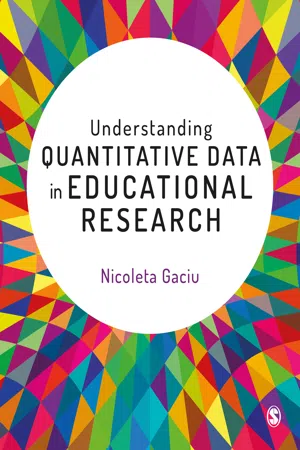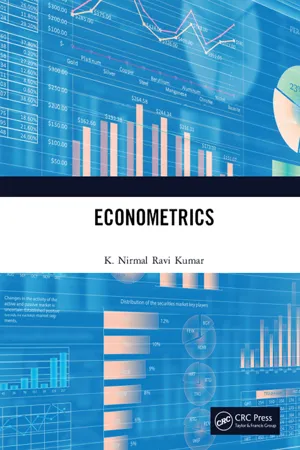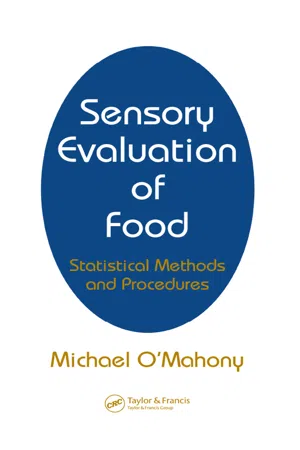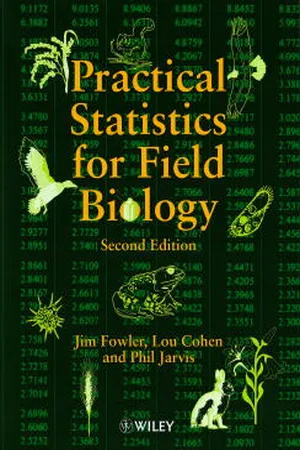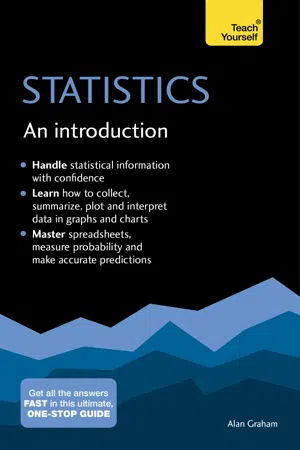Correlation Math
Correlation in math refers to the statistical relationship between two or more variables. It measures the strength and direction of the linear relationship between the variables, with values ranging from -1 to 1. A correlation of 1 indicates a perfect positive relationship, -1 indicates a perfect negative relationship, and 0 indicates no relationship.
8 Key excerpts on "Correlation Math"
- Nicoleta Gaciu(Author)
- 2020(Publication Date)
- SAGE Publications Ltd(Publisher)
...The table or scatterplot should be carefully examined to compare the variables and to see whether the paired data points follow a straight line which indicates that the value of one variable is linearly associated with the value of the other variable. If an association or a relationship exists between variables, the strength and direction of the relationship will be measured by a coefficient of correlation. To see if the relationship occurs by chance, a null hypothesis is formulated, and then the p -value is computed from the data. We cannot go directly from statistical correlation to causation, and further investigations are required. 13.1 Covariance and correlation between two variables Covariance and correlation describe the association (relationship) between two variables, and they are closely related statistics to each other, but not the same. The covariance measures only the directional relationship between the two variables and reflects how they change together. A direct or positive covariance means that paired values of the two variables move in the same direction, while an indirect or negative covariance means they move in the opposite direction. The formula for covariance is: where x i is the i th x -value in the data set, is the mean of the x values, y i is the i th y -value in the data set, is the mean of the y -values and n is the number of data values in each data set. If cov(X, Y) > 0 there is a positive relationship between the dependent and independent variables, and if cov(X, Y) < 0 the relationship is negative. Example 13.1 Computing the covariance Data file: Ex13_1.csv Suppose that a physics teacher would like to convince her students that the amount of time they spend studying for a written test is related to their test score...
- eBook - ePub
- K. Nirmal Ravi Kumar(Author)
- 2020(Publication Date)
- CRC Press(Publisher)
...2.5.4: Extent of overlap indicates Positive Correlation of A and B variables • The sign of the correlation coefficient determines, whether the correlation is positive or negative (ie., direction). The magnitude of the correlation coefficient determines the strength of the correlation. The extreme values of r, that is, when r = ±1, indicate that there is perfect (positive or negative) correlation between X and Y (Appendix 2.A.1). However, if r is 0, we say that there is no or zero correlation. The remaining values falling in sub-intervals of [–1 to +1], describe the relationship in terms of its strength and the Figure 2.6 may be used as a rough guideline as to what adjective should be used for the values of ‘ r ’obtained after calculation to describe the relationship. Say, for example, r = −0.758 suggests a strong negative correlation and r = +0.469 indicates moderate positive correlation. • The value of correlation coefficient is symmetrical in nature. That means, the correlation coefficient between X and Y i.e., r XY is same as correlation coefficient between Y and X i.e., r YX. Fig. 2.6: Measure of strength of correlation between the variables • Correlation is a measure of linear association and linear dependence only and it has no meaning for describing non-linear relations between the variables. Even though correlation measures the linear relationship between two variables, but it will not explain the cause and effect relationship between the variables. That means, it won’t indicate which variable is dependent and which variable is independent. • Correlation is a two way relationship and not one way relationship. For example, height and weight of an individual. Here, height depends on weight and weight depends on height of the individual. • If the two variables are independent, the value of correlation coefficient (‘r’) is zero. But, if r = 0, it does not mean the two variables are independent...
- eBook - ePub
Sensory Evaluation of Food
Statistical Methods and Procedures
- Michael O'Mahony(Author)
- 2017(Publication Date)
- CRC Press(Publisher)
...Other types of lines (curves, circles, etc.) are represented by more complex equations. Having considered some preliminary calculus, we will now go on to examine correlation. 15.2 What are Correlation Coefficients? The degree of correlation between two variables is represented by the correlation coefficient. The correlation coefficient range is as follows: + 1 for perfect correlation 0 for no correlation −1 for perfect negative correlation The correlation coefficient considered here is Pearson’s product-moment correlation coefficient, denoted by r. If two variables, say, growth rate of a plant and the rainfall the plant receives, are perfectly correlated, then should growth rate be plotted against rainfall, the graph will be a straight line with a positive slope (Figure 15.5). All points will fall on this straight line, indicating perfect correlation (r = 1); the growth rate will always increase by an amount proportional to the rainfall, the proportion always being the same. The actual slope of the line is not important as long as all points lie on the line. The correlation coefficient will be positive as long as the slope is positive; if the slope is negative, the correlation coefficient will be negative. Figure 15.5 Perfect correlation. In real life, correlations are rarely perfect (+1 or −1); it is very unusual for all points to fall on the line. They are usually scattered about the line and the correlation coefficient is reduced accordingly (Figure 15.6). The correlation is Figure 15.6 Imperfect correlation. Figure 15.7 Example of zero correlation. reduced as the points are scattered more, until the correlation becomes zero, when the points are scattered randomly. Zero correlation coefficients can also be obtained in other ways; consider the examples of nonrandom points shown in Figures 15.7 and 15.8. It is difficult to know where to draw a line in these figures. Note : The correlation coefficient is a coefficient of linear correlation...
- eBook - ePub
- Alan J. Cann(Author)
- 2013(Publication Date)
- Wiley(Publisher)
...If you swap the two variables, you will obtain a different regression line. In contrast, correlation calculations are symmetrical with respect to X and Y. If you swap the labels X and Y, you will still get the same correlation coefficient. 11.2. Correlation Correlation, the relationship between two variables, is closely related to prediction. The greater the association between variables, the more accurately we can predict the outcome of events which have not yet happened. In biology, of all subjects, there is rarely an exact correlation of observed results with a mathematical function – the points never fit exactly on the line. The question is therefore whether an association between two variables could have occurred by chance. There are numerous methods for calculating correlation, for example: 1. The Pearson, or ‘ r -value’, correlation (parametric). Calculate the Pearson correlation coefficient if you know or can assume that both X and Y are interval data sampled from normally distributed populations. However, with large samples, the frequency distribution of the population is less important. Correlation is greatly affected by sample size. With very large samples small correlation coefficients will be statistically significant, but with small samples only very high correlations will reach statistical significance. 2. The Spearman (rank-order) correlation (non-parametric). Calculate the Spearman correlation coefficient if X or Y are ordinal or ranked-data. The Spearman correlation is based on ranking the two variables, and so makes no assumption about the distribution of the values and is usually calculated on occasions when it is not convenient, economic or even possible to give actual values to variables, but only to assign a rank order to instances of each variable. It may also be a better indicator that a relationship exists between two variables when the relationship between them is non-linear. 3...
- eBook - ePub
- Jim Fowler, Lou Cohen, Philip Jarvis(Authors)
- 2013(Publication Date)
- Wiley(Publisher)
...14 MEASURING CORRELATIONS 14.1 The meaning of correlation Many variables in nature are related; examples from biology include the mass of a growing organism and its volume, the length of an otolith (‘ear-stone’) and the length of the fish it is taken from, the structural complexity of a plant community and latitude. Relationships or associations between variables such as these are referred to as correlations. Correlations are measured on ordinal or interval scales. When an increase in one variable is accompanied by an increase in another, the correlation is said to be positive or direct. The length of an otolith and the length of the fish are positively correlated. When an increase in one variable is accompanied by a decrease in another, the correlation is said to be negative or inverse. The mass of body fat of a migrating bird and the distance flown since its last feed are negatively correlated. The fact that variables are associated or correlated does not necessarily mean that one causes the other. Otolith length and body length in a population of fish may be correlated but one cannot be said to cause the other; both are undoubtedly related to some underlying genetic factor. In common usage, the word ‘correlation’ describes any type of relationship between objects and events. In statistics however, correlation has a precise meaning; it refers to a quantitative relationship between two variables measured on ordinal or interval scales. 14.2 Investigating correlation Bivariate observations of variables measured on ordinal or interval scales can be displayed as a scattergram (Figs 4.8 and 14.1). Just as a simple dot-diagram gives both a useful indication of whether a sample of observations is roughly symmetrically distributed about a mean and the extent of the variability, a scattergram gives an impression of correlation. Figure 14.1 (a) shows a clear case of a positive correlation, whilst Fig...
- eBook - ePub
Statistics: An Introduction: Teach Yourself
The Easy Way to Learn Stats
- Alan Graham(Author)
- 2017(Publication Date)
- Teach Yourself(Publisher)
...A useful intuitive indication of correlation is the extent of the scatter around the best-fit line when the data are plotted on a scattergraph. Positive correlation shows a clear pattern of points running from bottom left to top right, while negative correlation shows a pattern of points running from top left to bottom right. • Two measures of correlation were introduced: the Pearson coefficient (r) and, for ranked data, the Spearman coefficient (r s). Both measures produce values lying in the range -1 to 1. A coefficient value of -1 means perfect negative correlation, while a coefficient value of 1 means perfect positive correlation. When r or r s take a value of around 0, there is no correlation between the two factors in question. • Finally, caution was urged in the interpretation of correlation. Strong correlation is no indication of whether or not the relationship in question is one of cause and effect. To find out more via a series of videos, please download our free app, Teach Yourself Library, from the App Store or Google Play. _____________ 1 This is a slightly different version of the formula for standard deviation given in Chapter 5, but they both amount to the same thing....
- Jacob Cohen, Patricia Cohen, Stephen G. West, Leona S. Aiken(Authors)
- 2013(Publication Date)
- Routledge(Publisher)
...2 Bivariate Correlation and Regression DOI: 10.4324/9780203774441-2 One of the most general meanings of the concept of a relationship between a pair of variables is that knowledge with regard to one of the variables carries information about the other. Information about the height of a child in elementary school has implications for the probable age of the child, and information about the occupation of an adult can lead to more accurate guesses about her income level than could be made in the absence of that information. 2.1 Tabular and Graphic Representations of Relationships Whenever data have been gathered on two quantitative variables for a set of subjects or other units, the relationship between the variables may be displayed graphically by means of a scatterplot. For example, suppose we have scores on a vocabulary test and a digit-symbol substitution task for 15 children (see Table 2.1.1). If these data are plotted by representing each child as a point on a graph with vocabulary scores on the horizontal axis and the number of digit symbols on the vertical axis, we would obtain the scatterplot seen in Fig. 2.1.1. The circled dot, for example, represents Child 1, who obtained a score of 5 on the vocabulary test and completed 12 digit-symbol substitutions. FIGURE 2.1.1 A strong, positive linear relationship. TABLE 2.1.1 Illustrative Set of Data on Vocabulary and Digit-Symbol Tests Child (no.) Vocabulary Digit-symbol 1 5 12 2 8 15 3 7 14 4 9 18 5 10 19 6 8 18 7 6 14 8 6 17 9 10 20 10 9 17 11 7 15 12 7 16 13 9 16 14 6 13 15 8 16 When we inspect this plot, it becomes apparent that the children with higher vocabulary scores tended to complete more digit symbols (d-s) and those low on vocabulary (v) scores were usually low on d-s as well. This can be seen by looking at the average of the d-s scores, M d v, corresponding to each v score given at the top of the figure...
- eBook - ePub
- Gary Rassel, Suzanne Leland, Zachary Mohr, Elizabethann O'Sullivan(Authors)
- 2020(Publication Date)
- Routledge(Publisher)
...The correlation coefficient, a measure of association, indicates the amount of variation in the dependent variable associated with the independent variable. The Regression Equation The regression equation is the equation for the straight line that best describes a set of data points. The equation is asymmetric; therefore, the analyst must designate which variable is independent and which is dependent before calculating the components of the equation. 1 Deriving a regression equation involves four steps: Obtaining data on two-interval variables. Plotting the data on a graph: The dependent variable, Y, is graphed on the vertical axis The independent variable, X, is graphed on the horizontal axis Determining whether the relationship between the two variables represented by the plotted data can be appropriately summarized by a straight line. Calculating the regression equation. Step 1. Obtaining Data To see how these steps are carried out, let’s consider a simple study, reported in Table 14.1, to learn how cumulative car mileage is related to annual repair costs. We obtained data on 10 randomly selected cars from a motor pool and used data on each car’s mileage on the first of January and its repair costs over the following 12 months. Table 14.1 Data on Car Mileage and Repair Costs Total Miles on Odometer (X) January 1 Repair Costs (Y)from January-December Car1 80,000 1,200 Car 2 29,000 150 Car 3 42,000 600 Car 4 53,000 650 Car 5 73,000 1,000 Car 6 80,000 1,500 Car 7 60,000 600 Car 8 13,000 200 Car 9 14,500 0 Car10 45,000 325 Step 2. Plotting the Data on a Graph Next, we plotted the data on the graph. The dependent variable, the Y of the regression equation, was placed on the vertical axis. The independent variable, the X of the regression equation, was placed along the horizontal axis. The graph of plotted points is called a scatterplot (Figure 14.1a). Figure 14.1 Scatterplots Step 3...
